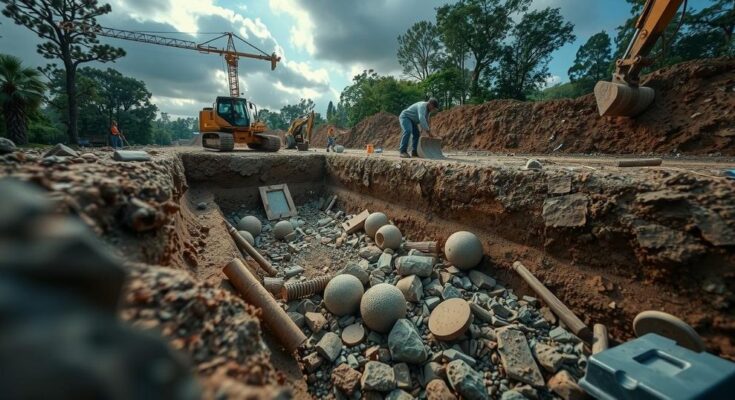A routine road project in Northern Idaho evolved into an archaeological venture upon the discovery of hundreds of artifacts near US Highway 95. This find suggests a long history of human presence in the area, prompting collaboration between the Idaho Transportation Department and the Kootenai Tribe of Idaho to catalog and study the artifacts. The findings challenge existing historical timelines and highlight the importance of recognizing cultural heritage amidst contemporary development endeavors.
In the hushed expanses of Northern Idaho, a standard roadway upgrade has transformed into a remarkable journey of cultural discovery. As crews set out to enhance US Highway 95 near McArthur Lake by straightening curves and constructing a small bridge for wildlife, they unexpectedly unearthed a treasure trove of cultural artifacts. These findings not only illuminate the deep-rooted history of human life in this region but also promise to enrich our understanding of the area’s indigenous heritage. Joint efforts by the Idaho Transportation Department and the Kootenai Tribe of Idaho are now underway as experts record and study these artifacts, shedding new light on the past. At first glance, it seemed like any other infrastructure project, with utilitarian goals to improve safety and wildlife passage. However, as the ground was broken and machinery stirred up the earth, the discovery of hundreds of artifacts suggested a tapestry of human life that dates back much further than previously assumed. Archaeologists and team members from the Kootenai Tribe have teamed up, transforming a road improvement into a significant archaeological endeavor filled with ancient stories waiting to be told. “This discovery has important implications for understanding the long history of our people in this land,” shared Jyl Wheaton-Abraham, an archaeologist and member of the Kootenai Tribe. The Kootenai Tribe of Idaho has long been intertwined with the land, but the artifacts unearthed during this project may change the narrative of their connection to it. The partnership with the Idaho Transportation Department illustrates the importance of collaboration in uncovering history, as cultural professionals meticulously catalogue the artifacts. Key to this process is understanding that every piece could tell a vibrant tale of those who walked and lived in these lands long before roadways carved their passages through the earth. Within a decade of societal shift, such archaeological findings could redefine our historical timelines based on the tangible remnants left behind. As the modern world encroaches upon ancient landscapes, more stories of resilience and presence emerge from the soil, revealing the rich, layered history of Idaho. “We all breathe life into the history, our stories shape our present,” expressed Carrie Ann Hewitt, the project manager with the Idaho Transportation Department, highlighting the essence of this cultural encounter. In a world where advancements often overlook the whispers of the past, this project emphasizes the necessity of balance—where progress meets respect for traditions. The artifacts found are not merely remnants of a bygone era; they are the heartbeat of a culture that still thrives today. Idaho’s highways might be designed for speed, but the discovery unearthed here invites us to pause and reflect on the intricate tapestry of life that has flourished beneath our feet.
The Idaho Transportation Department initiated a standard road project aimed at improving safety on US Highway 95 near McArthur Lake. The project involved straightening highway curves and constructing a bridge for wildlife crossings to help preserve ecosystem integrity. However, initial digging led to an unexpected discovery of cultural artifacts that could rewrite the historical timeline of human habitation in Northern Idaho. This intersection between development and cultural preservation showcases the significance of collaborative efforts between state agencies and Native tribes, underscoring the importance of understanding the historical narrative of land development.
What began as a routine infrastructure project has blossomed into a crucial archaeological initiative, unveiling a rich heritage and igniting discussions about the significance of cultural preservation. Through the dedication of the Idaho Transportation Department and the Kootenai Tribe of Idaho, the project symbolizes a harmonious balance between modern advancement and the respect for ancestral connections to the land. As we proceed forward, this discovery serves as a poignant reminder of the hidden stories that lie beneath our feet, deserving of recognition and celebration.
Original Source: www.boisestatepublicradio.org



